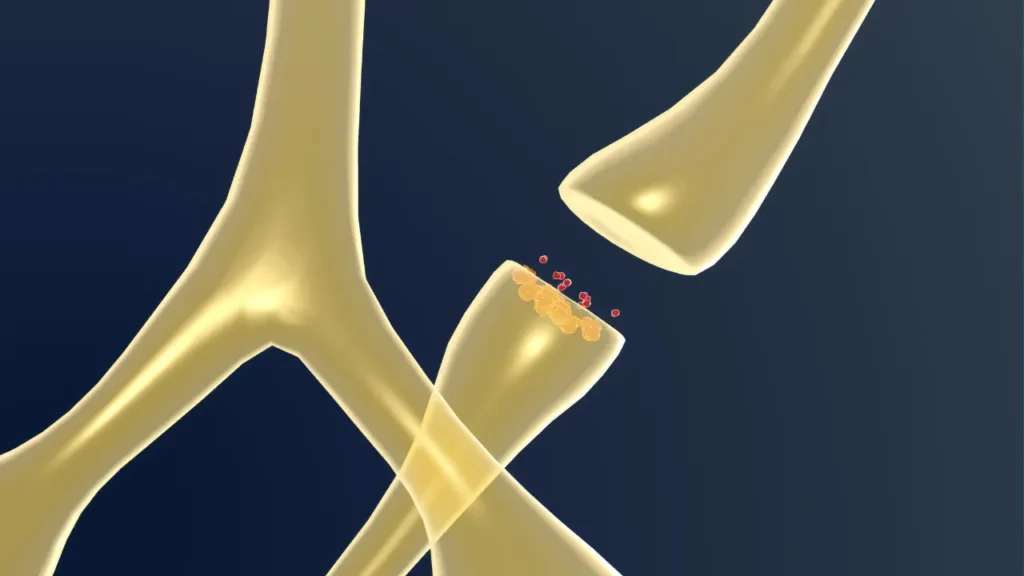Tarragon, scientifically known as Artemisia dracunculus, is an herb that has been used for ages in both culinary and medicinal applications across numerous civilizations. Tarragon’s unusual flavor profile makes it a popular cooking ingredient, but it also has a number of health benefits which makes it a suitable choice as a dietary supplement.. This article goes into the multidimensional nature of tarragon, including its chemical composition, health benefits, optimal dosage, adverse effects, potential substance interactions, and best practices for safe use.
You May Also Like:
Should You Try CBD for Focus? Here Are the Facts.
CBD for Concentration: The Productivity Hack for Energy and Focus
Tarragon: Benefits, Dosage, Side Effects, Drug Interactions, And Other Important Information is an original (NootropicsPlanet) article.
Nature of Tarragon
Tarragon (Artemisia dracunculus) is a perennial herb with scented leaves. It is commonly utilized in culinary traditions all throughout the world, especially in French cuisine. The herb belongs to the Asteraceae family and is distinguished by its slender, elongated leaves and faint anise-like flavor. Tarragon is recognized not just for its culinary flexibility, but also for its medicinal benefits, which are due to its high content of phytochemicals such as flavonoids, coumarins, and essential oils.
Health Benefits of Tarragon
The following listed are some health benefits of Tarragon:
1. Improved Digestive Health
Tarragon has traditionally been used to increase appetite and enhance digestive function. It can boost saliva production and promote gastric juice secretion, which helps with meal breakdown and nutritional absorption. This can help with typical digestive concerns like indigestion and gas.
2. Antioxidant Properties
The flavonoids and phenolic compounds in tarragon act as powerful antioxidants that can neutralize harmful free radicals in the body. This antioxidant activity can help prevent cellular damage and reduce the risk of chronic diseases, including heart disease and cancer.
3. Anti-inflammatory Effects
Tarragon has anti-inflammatory effects, making it useful for lowering inflammation and pain caused by illnesses such as arthritis. Tarragon can reduce the activity of certain inflammatory markers which can then help to decrease pain caused by inflammatory disorders.
4. Heart Health
Coumarins found in tarragon may have a positive effect on heart health. These compounds can help prevent blood clots and improve circulation, potentially reducing the risk of heart attacks and strokes. Additionally, tarragon’s antioxidant effects can also contribute to cardiovascular health by preventing the oxidation of LDL cholesterol, a key factor in the development of heart disease.
5. Blood Sugar Regulation
According to a preliminary study, tarragon may help manage blood sugar levels, making it potentially advantageous for diabetics. Tarragon contains components that are thought to improve insulin sensitivity and glucose metabolism, although more research is needed to completely understand these effects.
6. Sleep and Anxiety Relief
The mild sedative properties of tarragon can contribute to improved sleep quality and reduced anxiety. By promoting relaxation and alleviating stress, tarragon can help individuals achieve better sleep and support overall mental health.

Chemistry of Tarragon
Tarragon has a wide variety of phytochemicals, which contribute to its health advantages. The most notable of them are coumarins, flavonoids, and phenolic acids. Examples of coumarins, including umbelliferone and esculetin, have anti-inflammatory and anticoagulant effects. Flavonoids like quercetin and kaempferol have antioxidant and neuroprotective properties. Phenolic compounds, including rosmarinic and caffeic acid, add to the herb’s antioxidant profile and provide protection against oxidative stress. Furthermore, tarragon contains essential oils. The most notable essential oil is estragole which has sparked research due to its potential impact on cognitive functioning.
Physiological Mechanism of Action of Tarragon
Tarragon’s rich phytochemical composition accounts for its alleged health benefits and potential cognitive-enhancing benefits. Essential oils, particularly estragole, have an important role in regulating brain activity. Estragole has been examined for its effects on the central nervous system (CNS), namely neurotransmitter systems. According to research, tarragon components may interact with acetylcholine, a neurotransmitter required for learning and memory. Tarragon’s ability to modulate acetylcholine levels may improve cognitive processes such as attentiveness, focus, and memory.
As mentioned, other components found in Tarragon such as flavonoids, coumarins, and phenolic acid contribute to the ability to improve digestive health, antioxidant, and anti-inflammatory properties.


Optimal Dosage of Tarragon
The appropriate dosage of tarragon is difficult to determine due to individual response variability and a lack of extensive clinical research. Tarragon is generally regarded as safe and healthy when used as a spice in cooking. If you are seeking tarragon supplements, you should contact a healthcare expert, as dosages might vary depending on the concentration of the extract and your specific health goals.
Side Effects of Tarragon
While tarragon is generally safe to take in small amounts, larger doses may cause problems. Tarragon, notably its essential oil estragole, has been linked to cancer risk when ingested in large quantities over time. The European Union defines estragole as a potential human carcinogen, recommending that large doses be avoided. There is insufficient safety data on tarragon, thus pregnant and breastfeeding women should minimize their intake.
Tarragon may also trigger allergy responses in people who are sensitive to plants in the Asteraceae/Compositae family, which includes ragweed, chrysanthemums, marigolds, and daisies. Such allergies can cause symptoms ranging from minor reactions such as skin irritation to severe reactions including anaphylactic shock.
Potential Substance Interactions with Tarragon
Tarragon has the potential to interact with certain drugs and substances owing to its coumarin concentration and blood clotting properties. Individuals on anticoagulant or antiplatelet drugs should exercise caution and consult their healthcare providers, as tarragon may enhance the effects of these medications, raising the risk of bleeding.
Furthermore, tarragon’s potential interaction with medications that are processed by the liver’s cytochrome P450 enzyme system suggests that it may impede or accelerate the metabolism of some drugs, affecting their efficacy and negative effects. This comprises a wide variety of drugs, from pain relievers to antifungals and antidepressants. Hence, you must consult professional advice before taking this supplement.


Best Practices for Responsible Use of Tarragon
To begin safe tarragon supplementation, you can try introducing tarragon into the diet through culinary applications which can provide health advantages without the hazards associated with high-dose pills. When purchasing supplements, it is also critical to select goods from recognized producers that specify the estragole content, ensuring that intake remains below safe levels.
Regular monitoring and communication with healthcare specialists are recommended, particularly if you have pre-existing health concerns or are using drugs that may interact with tarragon. Individuals who take a cautious approach can reap the cognitive and physiological benefits of tarragon while minimizing potential hazards.
Tarragon:
Conclusion
It can be concluded that Tarragon has the ability to improve your overall health due to its anti-inflammatory, antioxidant properties, blood sugar regulatory effects, etc. Tarragon is made up of a wide variety of phytochemicals such as coumarins, flavonoids, and phenolic acids. However, Tarragon should be always used with caution because it contains an active ingredient known as estragole. Estragole has been defined by the European Union as a potential human carcinogen.
Hence, you should always consult advice from a medical expert before beginning any supplemental routine. This is to ensure that you obtain your targeted needs while making sure you are safe throughout the whole supplemental journey. It is important to incorporate tarragon supplements into a balanced diet and lifestyle instead of using it as a substitute for a holistic lifestyle.


References:
- Artemisia Dracunculus (Tarragon): A Review of Its Traditional Uses, Phytochemistry and Pharmacology. Retrieved from:https://pubmed.ncbi.nlm.nih.gov/33927629/
- Artemisia Dracunculus L. (Tarragon): A Critical Review of Its Traditional Use, Chemical Composition, Pharmacology, And Safety. Retrieved from:https://pubmed.ncbi.nlm.nih.gov/21942448/
- Artemisia Dracunculus (Tarragon): A Review of Its Traditional Uses, Phytochemistry and Pharmacology. Retrieved from:https://www.ncbi.nlm.nih.gov/pmc/articles/PMC8076785/
Important Note: The information contained in this article is for general informational purposes only, and should not be construed as health or medical advice, nor is it intended to diagnose, prevent, treat, or cure any disease or health condition. Before embarking on any diet, fitness regimen, or program of nutritional supplementation, it is advisable to consult your healthcare professional in order to determine its safety and probable efficacy in terms of your individual state of health.
Regarding Nutritional Supplements Or Other Non-Prescription Health Products: If any nutritional supplements or other non-prescription health products are mentioned in the foregoing article, any claims or statements made about them have not been evaluated by the U.S. Food and Drug Administration, and such nutritional supplements or other health products are not intended to diagnose, treat, cure, or prevent any disease.
